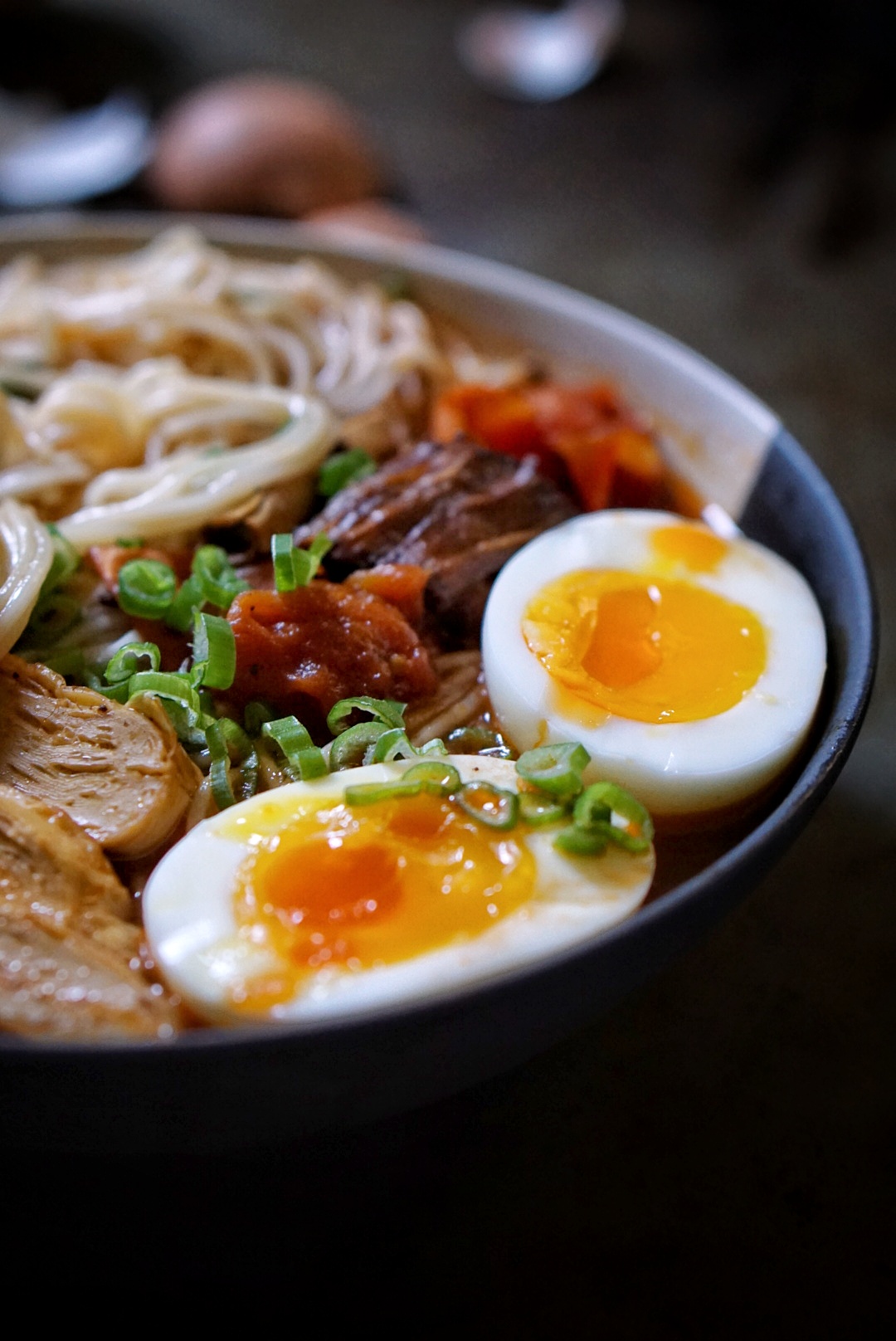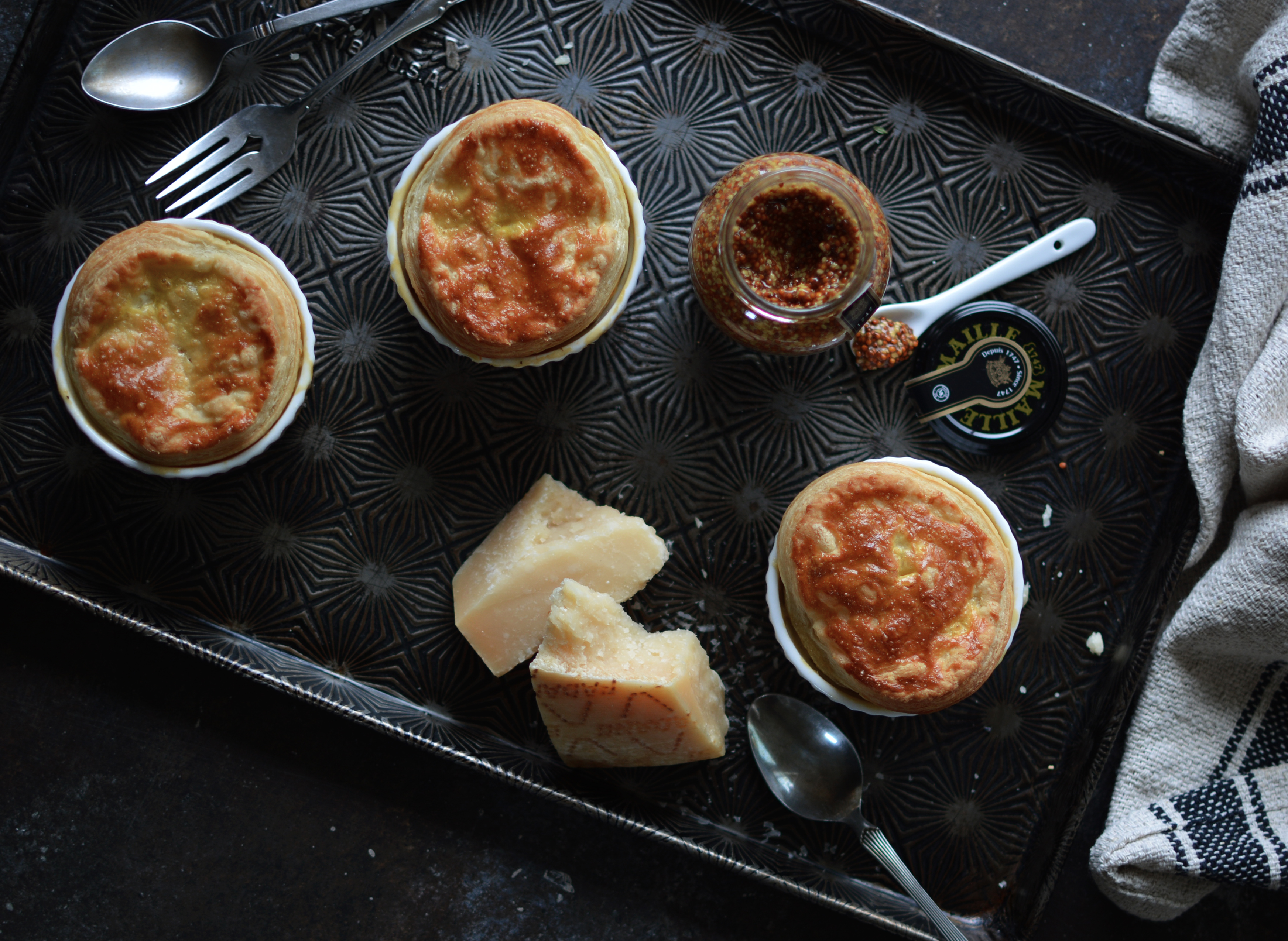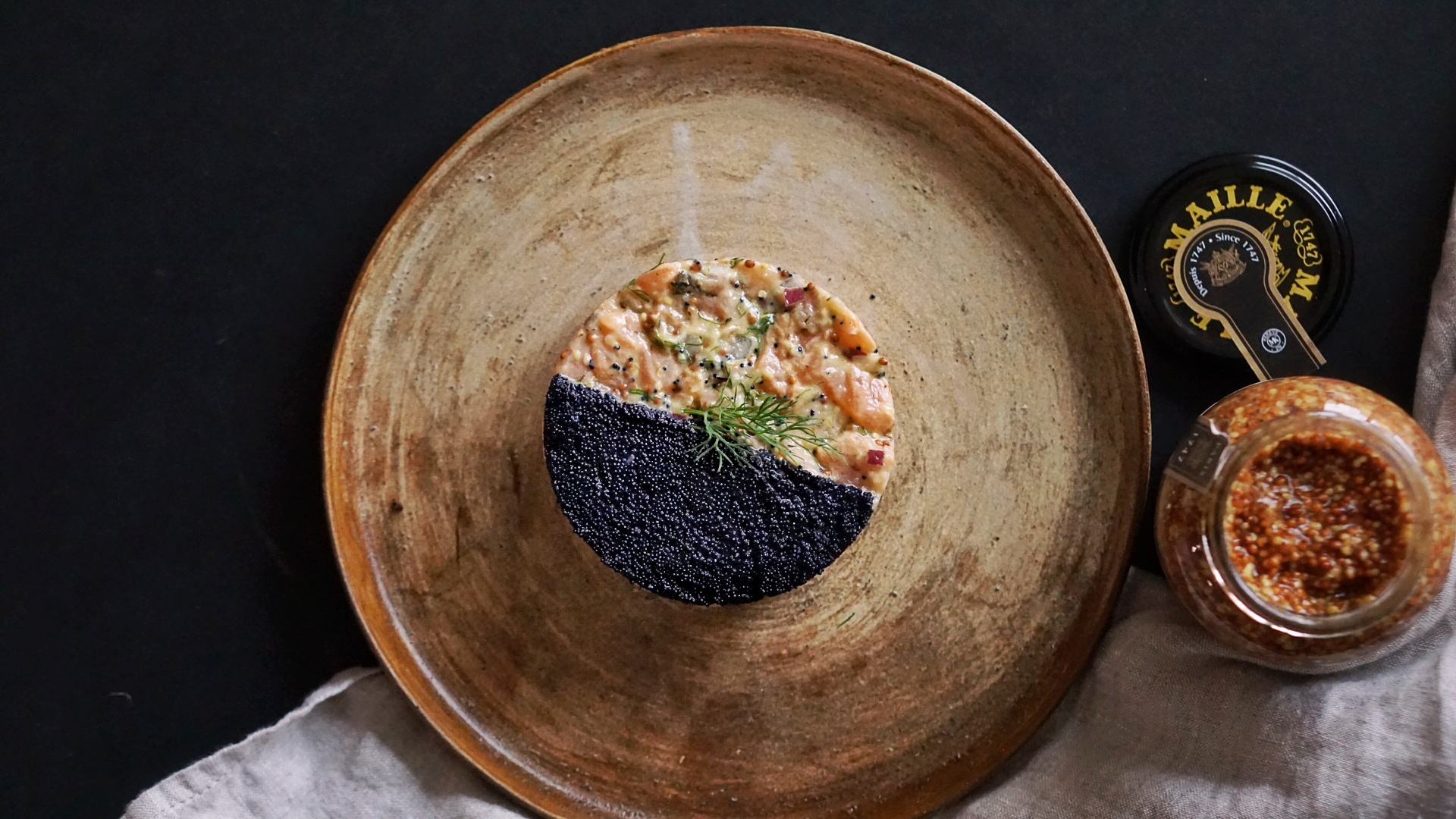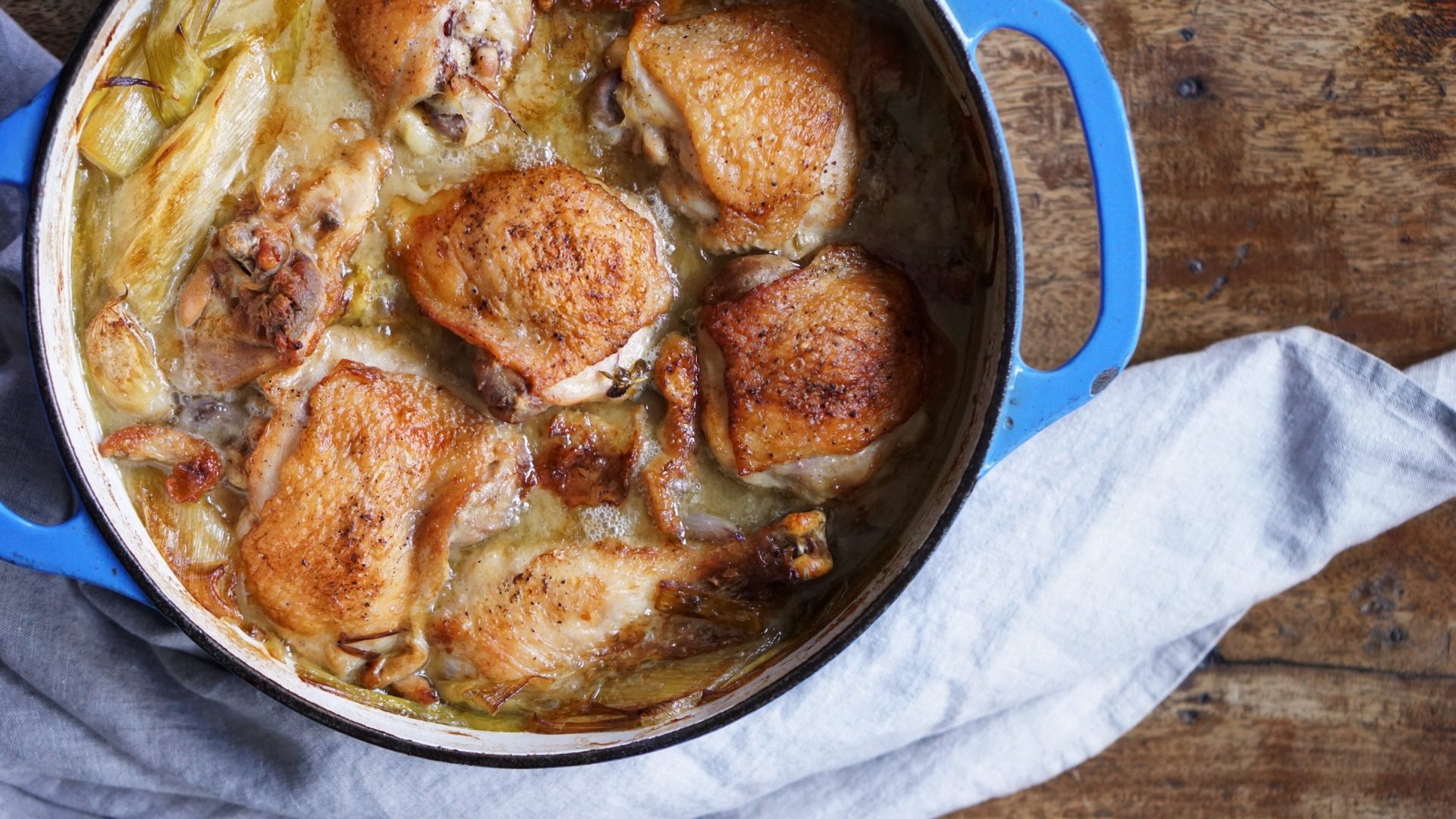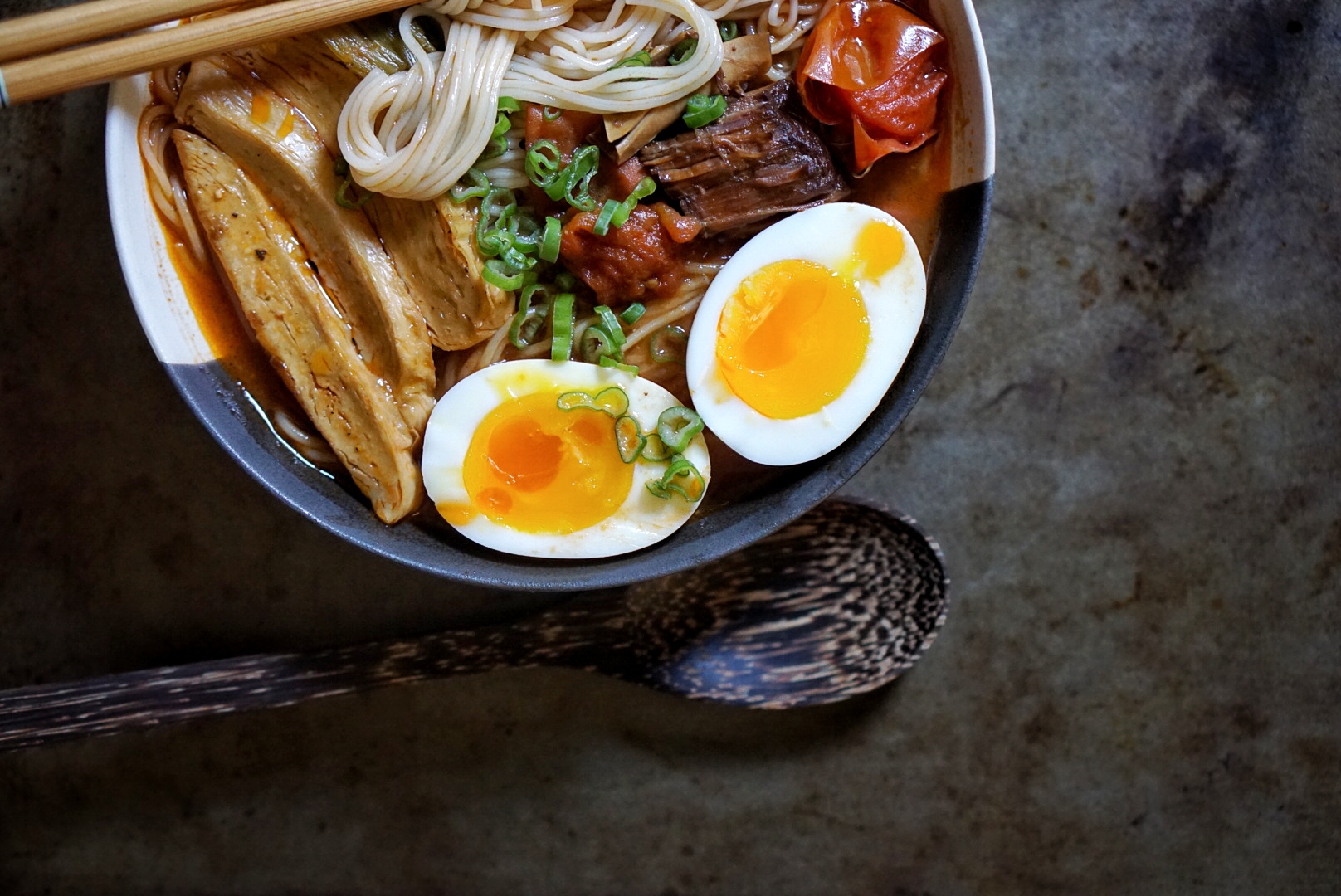
Beef Noodle Soup
Beef noodle soup is one of my favorite dishes to order at Chinese and Taiwanese restaurants. A huge, steaming bowl of chewy noodles floating in a dark soup, dotted with melt-in-your-mouth pieces of beef, the occasional tendon, and green bok choy, all for around $10. How can you go wrong with that?
My only beef (ha!) with restaurant beef noodle soup is that the broth is usually a water and soy sauce based liquid that the beef was braised in. It’s too salty, lacks complexity, and you can’t really enjoy the broth as a soup. My favorite part of beef noodle soup is, of course, the soup, so I am on a hunt to find the best beef noodle soup recipe with the best broth.
I recently joined the owners, Wenyan and Tom, of Noodles Fresh in El Cerrito for a lovely dinner, where we sampled nearly half the menu! They opened the restaurant last year with the concept of bringing together signature noodle dishes from across China in one place, featuring gluten-free rice noodles, and a vast selection of Chinese tea served in traditional tea ware. Though this is the couple’s first restaurant, the former engineer (her) and business professional (him) applied their experiences to build a well-oiled operation where every detail is thoughtfully planned and executed.
But what I was most interested in, of course, was the beef noodle soup. Wenyan researched and experimented with various styles of beef noodle soup (and there are so many!) for months before landing on a recipe for the restaurant. Though the recipe itself is a secret, she shared with me the overall process and secret ingredients that make their beef noodle soup so special.
Secret #1: Make a clear beef stock separately from the soy-based stewed beef. The final dish is mainly beef stock with a hint of the darker braising liquid.
Secret #2: Add tomato paste and fermented tofu (aka. doufu ru or 豆腐乳) for the perfect combination of saltiness and umami flavor.
It’s time consuming to make beef noodle soup, so I like to make a huge batch of it on a lazy Sunday. I freeze portions, and it makes a really easy and delicious weeknight dinner.
Serves 4 with leftovers | 5 hours
- 3 lb meaty beef knuckle or neck bones
- 1 thumb ginger, sliced into thick pieces
- 2 green onions
- 1 cup Shaoxing cooking wine
- 2 lb beef shank, or belly flap (牛腩)
- 1 braising spice bag – lu bao (滷包), or make your own:
- 3-4 star anise
- 1 tbsp Sichuan peppercorn
- 2 black cardamom pods
- 1 cinnamon stick
- 2 bay leaves
- 1 tbsp fennel seed
- 1/2 tbsp cumin seed
- 1 slice of ginger
- 1 green onion
- 1/4 cup Shaoxing cooking wine
- 1/4 cup light soy sauce
- 1 tbsp dark soy sauce
- 1 tsp sugar
- 1 lb fresh wheat or ramen noodles
- 3 tbsp fermented tofu (aka. doufu ru or 豆腐乳)
- 1/4 cup tomato paste
- 10 cups beef broth
- 1/2 cup braising liquid from the stewed beef
- Garnishes: cilantro, green onion, Sichuan chili oil, preserved mustard
- Optional soup toppings: tofu, tomato, soft boiled egg, other green veggies
Ingredient Tips:
- Fresh noodles freeze amazingly well. I always stock up when I’m at a Chinese or Korean grocery store. You can experiment to see which types of noodles you like best, but my favorites for beef noodle soup are the ones listed above.
- You can find braising spice bags (aka. lu bao or 滷包) in Chinese grocery stores. There are lots of different options, it can be confusing, pick one with a picture of a dish on it that looks like what you’re trying to make.
- You can find fermented tofu (aka. doufu ru or 豆腐乳) in Chinese grocery stores. Leave out if you don’t have it.
- The best cut of beef for this is belly flap of beef, which you can find at Chinese grocery stores. The belly flap includes layers of lean meat, fat, and sinews. When stewed slowly, the tougher layers breakdown into soft, slippery and chewy components that add texture to the lean meat. In my research, it seems like the western equivalent of the belly flap is the short plate, the belly meat next to the brisket. Beef shank is also a good choice because it’s marbled with tendon which melts down beautifully when slow braised. Brisket and chuck are usable as well.
- You can substitute homemade pork or chicken broth for the beef stock. It will have a different flavor profile but will also be delicious. Sometimes I’ll make a stock with pork, chicken, and beef bones.
Directions
Beef Broth:
- Add all ingredients to a large stock pot, and fill with cold water, covering the meat by 2 inches.
- Bring to simmer over high heat. Immediately reduce the heat to low, so the liquid is just barely simmering. This will give you a clear broth, whereas boiling will create a cloudy broth.
- Cook uncovered for 4 hours, periodically skim off the scum that forms on top of the liquid. If the water gets below the bones, add more water so bones are submerged.
Stewed Beef:
- Cut beef into 1.5 inch cubes.
- In medium pot over medium-high heat, stir fry the ginger and green onion until fragrant.
- Add beef, spice bag, soy sauces, sugar, and cooking wine. Add water to just submerge the meat.
- If using a pressure cooker, cook on medium-low for 45 min. If cooking on the stove-top, simmer covered, on medium-low, for 2-3 hours. Check for tenderness at 2 hours, the meat and sinews should all be easy to chew.
Beef Noodle Soup:
- In a medium pot, combine 10 cups beef broth, fermented tofu, tomato paste, stewed beef braising liquid, and bring to a simmer. Mix ingredients together with a wooden spoon, and taste for saltiness. Adjust to taste by adding more fermented tofu, tomato paste, or stewed beef braising liquid, until you like the flavor. If adding any additional ingredients that need cooking (e.g. tofu, tomato), add it to the broth now.
- In another medium pot, bring water to boil and cook the boy choi for 2 minutes. Remove and set aside.
- In the same pot, add noodles to the boiling water. Stir and separate the noodles as they come to a boil, so they don’t stick together. Strain noodles when they’re slightly undercooked and chewy. I take them out when they’re still slightly white in the very center (you have to bite into it to check).
- To serve, divide the noodles into 4 bowls. Spoon the broth over each bowl. Add 2-3 pieces of beef, and the boy choi to each bowl. Garnish with any combination of cilantro, green onion, Sichuan chili oil, and preserved mustard.
